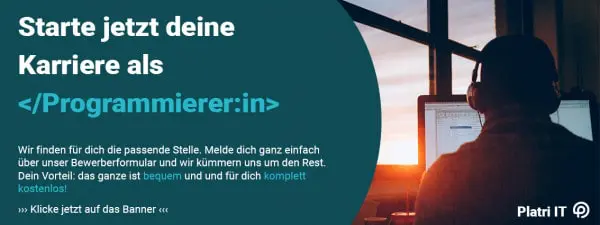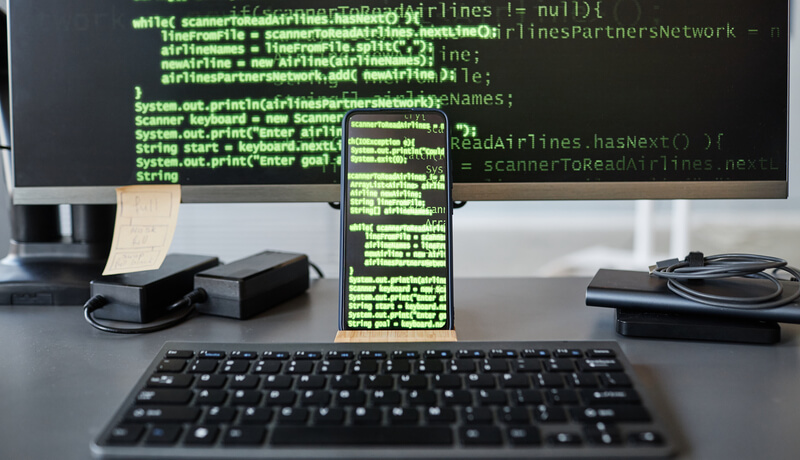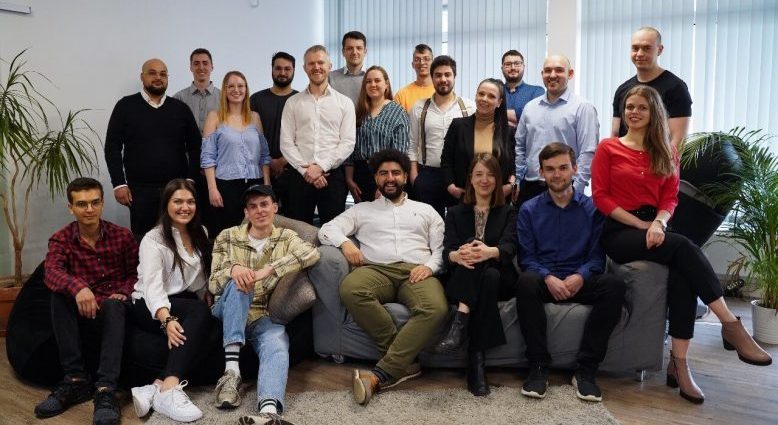Flutter – origin, application & advantages
Flutter is a cross-platform framework for the development of mobile apps that was developed by Google. The following article explains how it came about, what its exact advantages are and how you can learn how to use the framework.
What is Flutter?
Flutter is an SDK for mobile apps that developers can use to create high-quality native apps for iOS and Android. It is free and open source and was developed by Google. It uses the Dart programming language, which is also from Google.
Dart, on the other hand, is a concise and easy-to-learn language that helps developers to write code quickly. The hot reload feature allows developers to iterate their code quickly and see the changes made in real time. This makes Flutter an ideal platform for developing prototypes or creating production-ready applications.
Several successful apps have already been developed, including the Hamilton app, which was presented in the App Store. With its powerful functions and user-friendliness, the framework will continue to gain popularity among developers in the future.

History of development
As already described, Flutter is an open-source UI software development kit developed by Google. It is used to develop applications for Android, iOS, Windows, Mac, Linux, Google Fuchsia and the web. In addition to the Dart programming language, Flutter uses the Skia graphics engine.
It was first announced at the Google I/O conference in 2017 and subsequently released in 2018. Since then, it has become one of the most popular frameworks for mobile development. Key features include support for Material Design and Cupertino widgets, fast performance and hot reload.
The framework also supports a wide range of devices, from smartphones and tablets to desktop computers.

What are the benefits of Flutter?
Some of the features that make Flutter attractive to app developers are
- A single codebase for iOS and Android: With Flutter, you can develop for both iOS and Android using the same codebase. This makes development faster and easier as you don’t have to maintain two separate codebases.
- Fast development: The hot reload function allows you to make changes to your code and see the results almost immediately. This makes development faster and easier as you don’t have to wait for long compilation times.
- Beautiful user interfaces: The rich set of Material Design and Cupertino (iOS) widgets allows you to create beautiful, responsive user interfaces.
- Native performance: Compilation of developed apps into native code so that they run quickly and smoothly on all devices.
If you are looking for a cross-platform solution for mobile application development, Flutter is definitely worth considering.
How do you learn Flutter?
As already mentioned, the choice of platform also plays an important role. In general, Android apps can be somewhat more complex to develop due to the fragmentation of the ecosystem (different devices, screen sizes, Android versions), which can potentially lead to higher costs.
The costs can also be influenced by the choice of development platform, whether native development or the use of cross-platform frameworks such as React Native or Flutter.
Again, it is advisable to carefully evaluate the specific requirements of the project in order to obtain accurate Android app development cost estimates.

Do you have more questions about Flutter?
You can reach us from Monday to Friday between 9:00 am and 5:30 pm. We look forward to hear from you!
info@platri.de
Phone
0234 497 014 47
Do you have any further questions about our article, this topic or app development costs at Platri IT? Then please get in touch with us. If you are interested in a job at Platri IT, we look forward to your visit to our career portal. We look forward to hearing from you!

